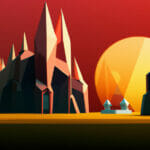Curious about camera control in Roblox Studio? You’re in the right place! This engaging and step-by-step tutorial will introduce you to the world of Roblox camera control. You’ll also see why getting a handle on this skill can immensely improve your Roblox game development prowess.
Table of contents
What is Roblox Camera Control?
Camera control in Roblox is what allows developers to manipulate the view of the game as seen from a player’s perspective. Whether you’re developing a first-person shooter, a strategic puzzle game or an immersive adventure, mastering camera control is a key aspect of creating a compelling user experience.
Why Should I Learn It?
Quality games are not just about their storyline or gameplay; it’s also about how players perceive and interact with the game environment. A tactfully controlled camera can help in creating dramatic effect, guiding player’s attention, or contributing to the overall aesthetic of the game.
Learning Roblox camera control also allows you to add depth to your game creation, providing varied experiences to your players and opening up new possibilities in your game development journey.
So, are you ready to dive in? Let’s get started. Remember, no previous experience with camera control is required. All you need is your enthusiasm for creating amazing Roblox games!
Getting Started With Roblox Camera Control
Firstly, open Roblox Studio and create a new script. This is where we’ll be crafting our camera control.
--Creating a new script
local Script = Instance.new("Script")Setting Up the Camera
It’s time to set up our camera and connect it to our workspace. Here’s how:
-- Initializing the Workspace
local Workspace = game:GetService("Workspace")
-- Setting the Camera
local Camera = workspace.CurrentCameraNow, let’s set the camera’s type to Scriptable. A Scriptable camera will allow us to fully control our camera’s movement and features.
-- Making Camera Scriptable Camera.CameraType = "Scriptable"
Camera Position and Orientation
Setting the camera’s position and orientation is the first step in camera control. Positioning decides where the camera is located in the 3D space, while orientation determines the direction in which the camera is facing.
-- Setting Camera Position Camera.CFrame = CFrame.new(10, 15, 20) -- Setting Camera Orientation Camera.Focus = CFrame.new(5, 5, 5)
Camera Movement
We can simulate camera movement by changing the position of the camera over time. For instance, let’s make our camera move in a straight line. For this, we’ll utilize Roblox’s RunService which allows us to create loops in our script.
-- Initializing RunService
local RunService = game:GetService("RunService")
-- Function for Camera Movement
RunService.Stepped:Connect(function()
Camera.CFrame = Camera.CFrame + Vector3.new(0.1, 0, 0)
end)With the stepping function, the camera will move 0.1 units along the x-axis at every frame. This creates a smooth and continuous movement effect for our camera.
Camera Rotation
Rotating a camera effectively can add a dynamic experience to your Roblox game. Using Roblox’s built-in functions, we can rotate the camera around its axis.
-- Function for Camera Rotation
RunService.Stepped:Connect(function()
local RotationAngle = math.rad(1)
Camera.CFrame = Camera.CFrame * CFrame.Angles(0, RotationAngle, 0)
end)In the above code, Camera.CFrame is multiplied by a CFrame created with angle radians. Here, the camera rotates around the y-axis (upward axis) by 1 degree at every frame.
Camera Field of View
Field of View (FoV) is an important aspect of camera control. It determines the extent of the observable game world seen at any given moment.
-- Setting the Field of View Camera.FieldOfView = 70
Here, we set the FoV to 70, which is a common setting for many third-person and first-person games.
Smooth Camera Transitions
You can also create smooth camera transitions using the Lerp function. This function allows us to transition smoothly between two points over a certain duration of time.
-- Initialize the Target CFrame
local TargetCFrame = CFrame.new(100, 100, 100)
-- Smooth Transitioning
RunService.Stepped:Connect(function()
local TimeDelta = RunService:GetLastTimeStep()
Camera.CFrame = Camera.CFrame:Lerp(TargetCFrame, TimeDelta)
end)In this script, the camera will smoothly transition towards the target CFrame located at coordinates (100, 100, 100), creating a nice move-to-point animation.
Final Thoughts
That’s everything you need to get started with Camera Control in Roblox! Remember, practice makes perfect. The more you play around with these scripts and functions, the more comfortable you’ll become with handling the camera and creating intriguing experiences for your players. Happy coding!
Camera Subject
When building games where it’s crucial to focus on a specific character, setting the camera subject is key. The camera will automatically follow the assigned subject, which can be any humanoids or vehicles present in the game.
-- Setting the Camera Subject local Player = game.Players.LocalPlayer Camera.CameraSubject = Player.Character
The script sets the Player’s character as the camera’s subject, making the camera follow the player’s movements.
Switching Between Camera Modes
Roblox allows the use of different camera modes. For instance, the Classic and LockFirstPerson mode can provide two unique perspectives to your users. We’ll show you how to dynamically switch between them.
-- Switching to Classic Mode Camera.CameraType = "Custom" Camera.CameraMode = "Classic" -- Switching to LockFirstPerson Mode Camera.CameraType = "Custom" Camera.CameraMode = "LockFirstPerson"
The ‘Classic’ mode gives a third-person perspective, while the ‘LockFirstPerson’ mode puts the gamer right in your character’s shoes, creating a first-person view.
Zooming In and Out
Now, let’s create a script that zooms in and out. This can be achieved by incrementally changing the FieldOfview of the camera.
-- Zooming In
for i = 70, 40, -1 do
Camera.FieldOfView = i
wait(0.05)
end
-- Zooming Out
for i = 40, 70, 1 do
Camera.FieldOfView = i
wait(0.05)
endThe camera starts zooming in from 70 degrees FOV to 40 degrees and then zooms out back to 70 degrees. The Wait function is added to slow down the transition, making zooming smoother.
Camera Shake Effect
A ‘camera shake’ effect can add extra thrill and emphasis to your game during certain events. Below is a code snippet to add a shake effect to your camera.
-- Camera Shake Effect
RunService.Stepped:Connect(function()
local ShakeMagnitude = math.random() * 2
Camera.CFrame = Camera.CFrame * CFrame.new(ShakeMagnitude, ShakeMagnitude, ShakeMagnitude)
end)Every frame, we add a random shake magnitude to the Camera’s position to simulate a shake effect.
Applying Force to Camera
Lastly, we’ll show you how to add a force to your camera. This could be useful to mimic the effect of a sudden push or a gust of wind in your game.
-- Applying a Force Camera.CFrame = Camera.CFrame + Vector3.new(50, 50, 50)
The previous code instantly moves the camera by adding a Vector3 value to the current camera position.
Mastery of camera control can open up an exciting new dimension in your Roblox game development journey. With these practical examples, step into the power of controlling the player’s perspective and enhance the gameplay experience. Keep experimenting and happy game developing!
Where to Go Next?
Your journey in mastering the Roblox Camera Control is just the beginning. What’s next? Keep refining this newly-acquired skill, experiment with the different camera features, and implement them in various gameplay scenarios.
You’re just scratching the surface of what can be achieved with Roblox game development. Ready for the full adventure? We’d recommend checking out our comprehensive Roblox Game Development Mini-Degree. It’s a collection of courses covering all aspects of Roblox game development – from scripting with Lua to creating different types of games. Perfect for beginners and flexible enough for you to learn at your own pace.
Furthermore, don’t miss our broader Roblox courses collection. Over 250 career-boosting courses are available at Zenva Academy that can take you from beginner to professional. Stay curious, keep learning, and step up your game development journey with Zenva. Your dream of becoming a game developer is just a course away!
Conclusion
Camera control in Roblox is a powerful skill that can enhance your game development talent. It takes you a step closer to creating immersive and interactive games that engages players like never before. We hope this introduction has whetted your appetite for more!
The beauty of game development lies in its limitless possibilities. So, don’t stop here. Continue exploring, learning, and creating with Zenva’s Roblox Game Development Mini-Degree. Ready to take the next step in your game development journey? We’re here to guide you every step of the way.
Did you come across any errors in this tutorial? Please let us know by completing this form and we’ll look into it!

FINAL DAYS: Unlock coding courses in Unity, Godot, Unreal, Python and more.







